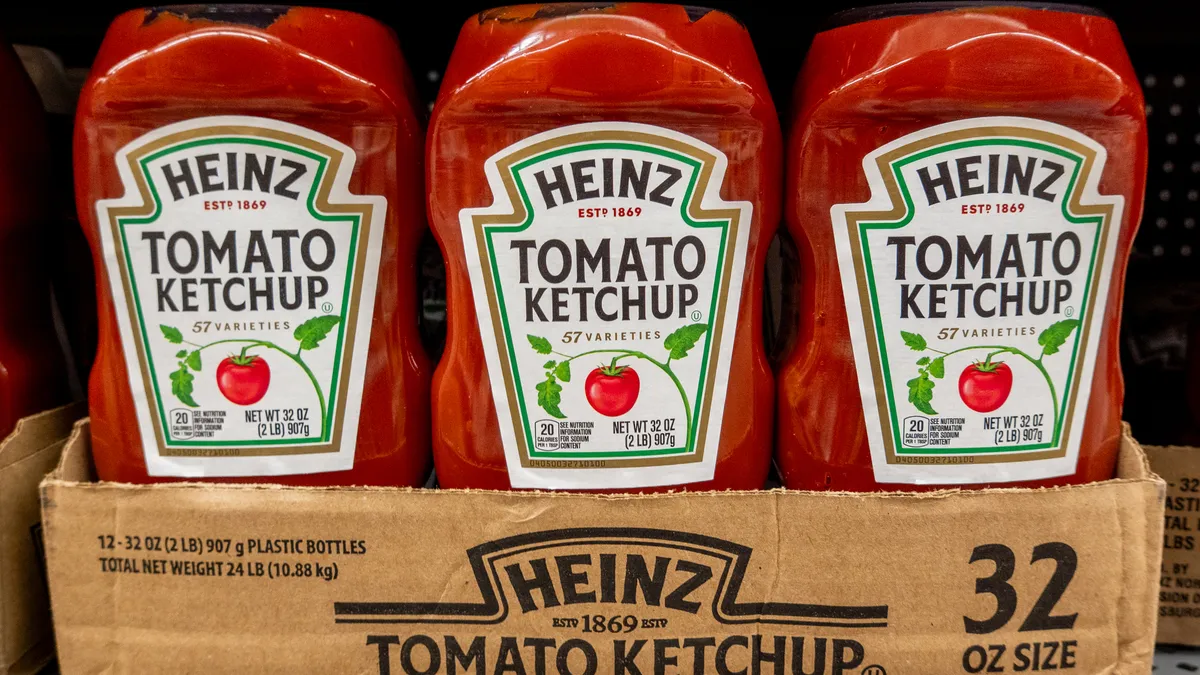Five years ago, companies collected enterprise data, putting it in data lakes, with the idea that good things would come from it – but instead of using the data, companies drowned in it.
Today, new technology has given rise to what some are calling an “intelligent supply chain,” one capable of operationalizing data lakes to power decisions. The combination of large-scale IoT infrastructures, deeper analytical processing and machine learning tools has created platforms dedicated to reforming business intelligence processes.
“This really is a new world,” Monte Zweben, CEO of Splice Machine – one such platform – told Supply Chain Dive.
If done right, companies can take this string of technology innovation and create a system providing not just end-to-end visibility, but also recommendations and the ability to implement actions autonomously in real time.
But what does it take to “do it right?” Building an intelligent supply chain is not just about the software or tools in place. It’s also about the decisions made along the way.
Introducing the cognitive operating system
Intelligent supply chains boast the ability to perform continuous predictive analytics on enormous amounts of data and use machine learning models to review historical information to plan for current and future needs.
To create such a system, the first thing a company needs is "an intelligent brain, a cognitive operating system," said Frederic Laluyaux, president and CEO of Aera Technology, a platform dedicated to building the self-driving enterprise. Companies already have the needed data from their transactional systems. "The brain does the job, and the data feeds the brain."
The cognitive operating system provides the computing connectivity. Laluyaux said that Aera’s system crawls transactional systems, like Google crawls websites. In some cases, their system has to crawl 54 different ERPs at one company, which is not unusual.
"Every big company that has gone through mergers and acquisitions will have the same complexity," Laluyaux said.
Even if the company has standardized their ERPs, they have many different modules.
The system has to connect directly or indirectly to all the signals, and that affects performance. It must also understand what the signals are and what they influence, whether that’s one level down or multiple levels down.
Is it better to scale systems up, or out?
One of the big decisions a company will make when choosing the architecture for their intelligent supply chain is what cognitive operating system to use, which means deciding whether to scale up or out.
Zweben said his company uses distributed architecture and the power of the cloud to scale out. In scaling out, they don’t depend on one computer to hold all the data. Instead they string together numerous inexpensive computers to scale larger data sets, with fast parallel computing. An advantage is that customers don’t have to buy any hardware, which is expensive and time consuming to procure, install and test.
Companies like Splice, Amazon and Google provide the cloud service, with the client specifying how much data they have how much computing they’ll do. It can be connected within minutes, Zweben said.
The brain does the job, and the data feeds the brain.

Frederic Laluyaux
President and CEO, Aera Technology
Splice uses different computing engines depending on the function, like machine learning and streaming. They link the machines together behind the scenes, giving the customer one interface, one integrated package. He said that scale out companies like Splice offer savings because they deploy “lots of extraordinarily cheap commodity hardware,” and if something fails, the others machines are built to take on the extra load.
Scale up companies, like SAP or Oracle, he said, use specialized and more costly hardware with numerous CPUs and top-notch networking.
"They can’t work in a scale out fashion," he said.
A risky enterprise?
Data risk is something to consider when implementing any new IT system, especially one that connects all the parts to create end-to-end visibility, make recommendations and take autonomous action.
The most obvious risk is data access.
"You have to make sure the data is isolated, encryptable, able to be locked down with access privileges at a granular level and tie it in to authentication and authorization levels with enterprises. Any data platform that’s enterprise ready needs to provide those capabilities," Zweben said.
But there’s another kind of risk to consider in an intelligent supply chain, and that’s trusting that the data integrity, that the recommendations and autonomous actions are adding value and working properly. Building trust in those machine learning recommendations is something society is already getting used to.
If your car’s GPS tells you there’s traffic, you’re probably more inclined to trust it over the advice of someone sitting in the car, when they don’t have visibility to the full traffic situation. But you must know that the data is accurate, secure and tested.
With intelligent supply chains, businesses are asking systems to make real time recommendations, so there must be trust in the system outcomes.
Who is paving the path to intelligent supply chains?
The IT department helps implement it, but "what’s surprising, is that it’s really not an IT project," Laluyaux said. The implementation decision comes from the C-suite. "It reminds me of the early days of ERP, transaction automation, when it was a board level decision."
The head of supply chain and manufacturing or the CIO is usually in charge, or the head of digital transformation, reporting to the CIO. And it’s a team process. "It takes a village," Laluyaux said.
Building out the functionality and implementing an intelligent supply chain can be done in a few months, Zweben said. Most of the time is spent on the user interface and testing. It’s nimble and faster to build an intelligent supply chain than to deploy an ERP.
The applicability of machine learning has gone from it being a black art for a bunch of PhDs, to being a tool that is available for everyone to use.

Monte Zweben
CEO, Splice Machine
Costs, not surprisingly, depend on the company size and desired scale. While the cost can be significant, said Laluyaux, the ROI is strong. The decision to scale up or scale out also impacts cost, said Zweben.
Companies choosing a system like SAP HANA get a well-engineered system from a prestigious company, but it will be expensive: millions compared to hundreds of thousands of dollars for a scale out, he said.
The other part of paving the way is change management. Changing to an intelligent supply chain requires human behavioral changes. The technology is changing faster than many people’s comfort levels.
"It’s harder to change people’s behavior than it is to change the technology underlying the organization," Zweben said.
Companies are, however, digitizing their manual processes, and digitizing their physical assets as well as they can. Inventory is tracked electronically using sensors, versus people scanning it. Fleets of trucks and containers are constantly reporting in their location. Using all this data effectively requires change.
Are we there yet?
Even if a company is ready for the future, is the technology ready?
"The applicability of machine learning has gone from it being a black art for a bunch of PhDs, to being a tool that is available for everyone to use," Zweben said.
What makes it possible now, instead of five years ago when the data lakes were filling up, is the ability to store, memorize and compute vast amounts of transactional data, using required business logic and machine learning in real time. Until recently, traditional enterprise technology, even in the cloud, couldn’t manage high transaction levels, complexity and a fast response time. It might get two out of three.
While an intelligent supply has not yet fully arrived, "we’re getting there," Laluyaux said.
He compares the current intelligent supply chain status to the different levels of autonomy in self-driving cars, which aren’t fully self-driving yet, but have different autonomy levels. An intelligent supply chain, he says, has four levels – wherein the first three are currently feasible, and the fourth is in pilot testing.
- Level 1 – real time end-to-end supply chain visibility. “Real time is critical. It’s the key to decision making,” Laluyaux said. While it’s available, very few companies have this capability today, as the traditional landscape with ERPs and external systems are complex, he said.
- Level 2 – recommendations. These are real time insights, where the artificial intelligence can learn from past decisions and make recommendations.
- Level 3 – predictions. The intelligent supply chain has to be able to predict outcomes, using data science to optimize the supply chain.
- Level 4 – taking autonomous actions. “You don’t want it to just be recommendations,” said Laluyaux, but to directly act in the transaction systems or with vendors. A few of his clients are piloting this level.
"I believe if you’re a company that makes and sells stuff, and you don’t start thinking about an intelligent supply chain, you won’t survive," Laluyaux said.




















